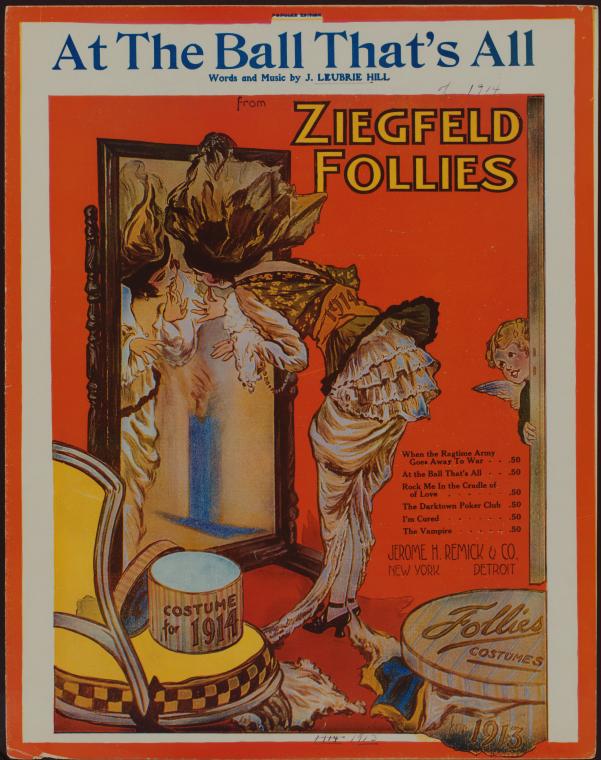The Great American Revue
At the Ball, That's All: J. Leubrie Hill

One such song was so popular that the sheet music was printed with the branding cover of the Ziegfeld Follies of 1914. J. Leubrie Hill was one of the most successful ragtime songwriters in the business. Published and promoted by Jerome H. Remick & Co., he wrote both music and lyrics, which described the dance. If you select the song from the Digital Gallery, go to the Image Set and read it. As the back cover of sheet music suggested: "Try it on your piano."
Hill had been a performer in some of the earlier shows, among them Rufus Rastus (1906), Bandanna Land (1908) and Mr. Lode of Koal (1909) and began to contribute individual songs. With composer/conductor J. Rosamond Johnson, he contributed to Hello Paris, a 1911 Ned Wayburn revue. Meanwhile, individual performers began to interpolate his songs into their vaudeville acts and Broadway appearances.
This image from the Schomburg Center, shows him with the cast of The Dark Town Follies of 1914-1915. This annual series appeared at Harlem's Lafayette Theater, although the 1914 edition had a short run, June 1914, at the Bijou, a theater district house that had most recently showed films. The New York Times described it as a "musical play" rather than a revue.
Read E-Books with SimplyE
 With your library card, it's easier than ever to choose from more than 300,000 e-books on SimplyE, The New York Public Library's free e-reader app. Gain access to digital resources for all ages, including e-books, audiobooks, databases, and more.
With your library card, it's easier than ever to choose from more than 300,000 e-books on SimplyE, The New York Public Library's free e-reader app. Gain access to digital resources for all ages, including e-books, audiobooks, databases, and more.
If you don’t have an NYPL library card, New York State residents can apply for a digital card online or through SimplyE (available on the App Store or Google Play).
Need more help? Read our guide to using SimplyE.
Comments
Eubie Blake
Submitted by Barbara Stratyner (not verified) on July 18, 2012 - 9:48am